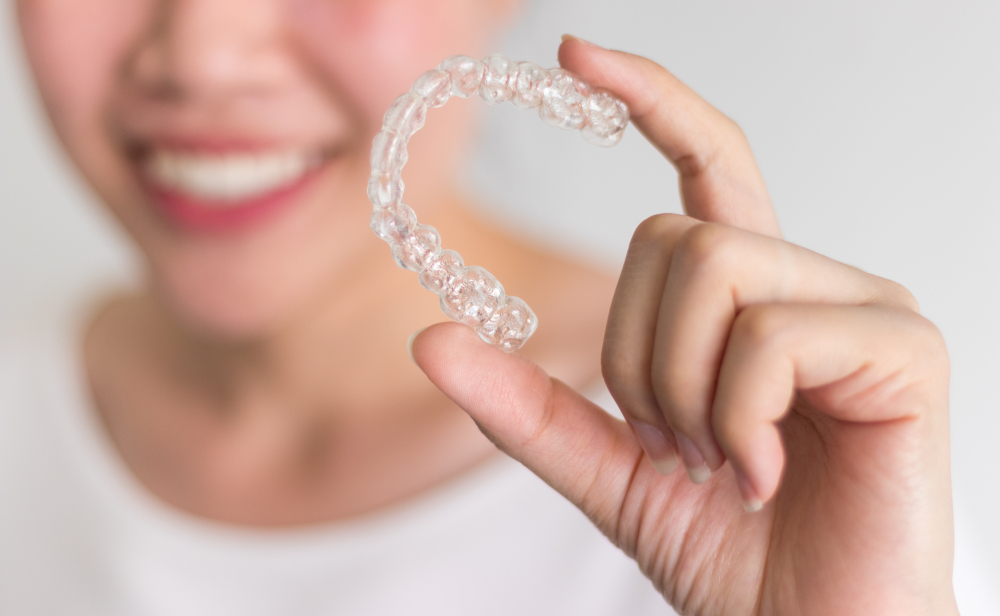Oral health and smile quality are very important to many people, with good reason, but these areas sometimes need a little assistance from the dental tools currently available to us. For those looking for help with tooth alignment and overall health, particularly children in many cases, two viable options that might both be available are traditional braces and Invisalign products.
At Bright Side Dental & Orthodontics, we’re happy to offer a variety of family dentist services, including both braces and Invisalign treatments for those looking for tooth straightening and alignment assistance. Whether these products are being used for yourself, your child or anyone else in your life, what are some of the important factors to consider as you choose between them? Here’s a primer on everything you need to know.

Basic Appearance
For many people, the most noticeable difference between braces and Invisalign products is the way they look in the mouth. Traditionally, the look of braces is fairly well-known, and they’ve been around for a long time. Invisalign products are newer and offer an alternative to traditional straightening that’s less noticeable in the mouth.
It’s important to note that both product lines have come a long way over the years, and today they’re almost as discreet as each other in most cases. Still, it’s true that they both have different appearances – one is simply less noticeable than the other. This is because Invisalign is made using a clear plastic material, while braces are still made from metal. For the most discreet appearance, Invisalign tends to be the preferred choice here.
Comfort Themes
Advancements in technology have also made Invisalign more comfortable, so it’s worth noting that this product can be preferred for comfort-related factors as well. The material used to make these products is a strong, durable plastic that doesn’t irritate the mouth and gums the way metal braces often do. This makes Invisalign a more comfortable option for some patients, and the comfort associated with this product is an added bonus that might well be worth considering.
Invisalign also tends to have a more streamlined design than braces, which can make them easier to wear over long periods of time. This might be important if you’re looking for something to wear that isn’t intrusive or difficult to get used to.
To be clear, though, braces have also come a long way here. The braces you wore as a child were likely far more uncomfortable than those your child might wear today, even if they still lag a bit behind Invisalign in this area.
Costs
Invisalign tends to be somewhat more expensive because of the materials involved in making these product lines, and this is especially true if your insurance doesn’t cover them (unfortunately many do not). However, some insurance companies offer a discount on Invisalign if it’s purchased right from the dentist, versus through other merchants. With this in mind, research your options thoroughly before making any decisions.
In most cases, however, braces will be the more cost-effective option. They are also more likely to be covered by insurance.
Effectiveness in the Mouth
Both options show strong results when it comes to aligning and straightening teeth, though braces may have a small advantage here. This is because they cannot be removed by the wearer — instead, they are worn 24 hours a day and will constantly be working to align the teeth in healthy ways.
Invisalign trays, on the other hand, can be removed. Because of this, some people might choose to take them out at night. This is not recommended by the makers of these products, however — they suggest that Invisalign trays be worn for up to 20 hours a day with top and bottom trays swapped at regular intervals (however you find most comfortable). The idea here is that consistent wear for the full 20 hours will speed up tooth alignment considerably. But because some people don’t always follow these recommendations, braces tend to be a bit more effective across a full population sample.
In addition, braces are typically more effective for cases of extreme tooth misalignment. Invisalign doesn’t always work for teeth that are rotated or overlapping, for instance.
Care and Cleaning Themes
Both products need to be cleaned and cared for regularly to help maintain their effectiveness. It’s recommended that you brush your teeth twice a day, or every morning and night, no matter which product you’re using. In addition, it’s important to follow the instructions for how to clean this product when you remove it from your mouth.
If you’re using braces, this is typically by brushing them with toothpaste while they are still in your mouth, or soaking them overnight in a container of water mixed with baking soda (for limited braces options that are removable — most are not). For Invisalign, it’s important that these are removed as directed — usually for around 20 minutes at first and then any time food particles become trapped between the trays.
Regarding maintenance, both types of products will need to be checked on regularly by a dentist or other qualified professional. This is because the teeth are always changing, and if there are any problems that need to be addressed, they will typically show up during these check-ups. For instance, it’s not uncommon for your dentist to make a slight adjustment to your child’s braces after a period of time.
For more on choosing braces versus Invisalign treatments, or to learn about any of our general dentist services, speak to the staff at Bright Side Dental & Orthodontics today.